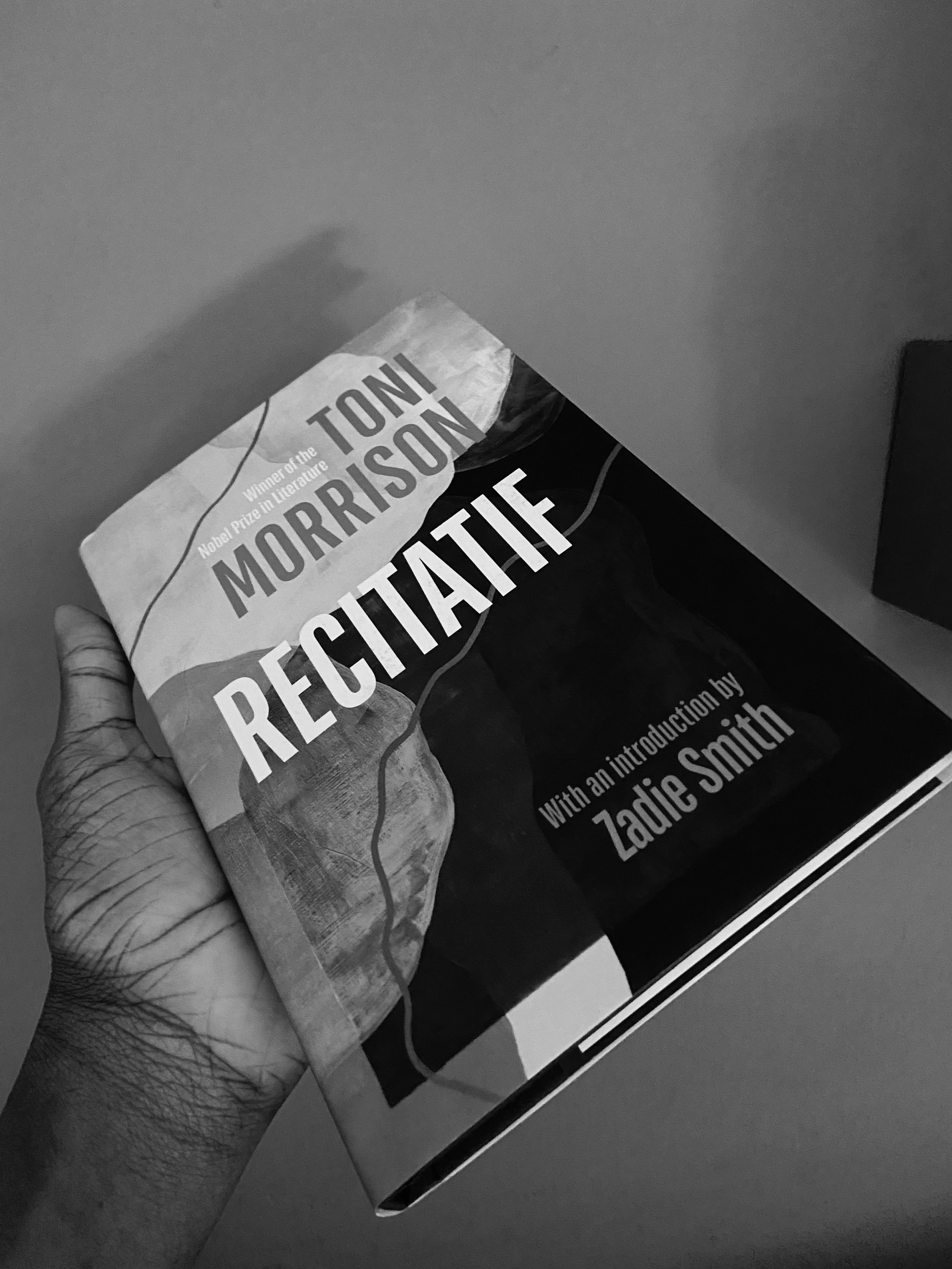‘Recitatif’: Toni Morrison’s Speculative Mirror
Although best known and loved for her beautifully piercing novels, Toni Morrison was hardly restricted by form; the much-loved writer’s bibliography also includes numerous poetry, plays and essays. First published in the 1983 Confirmation: An Anthology of African American Women, Recitatif—Morrison’s only short story—is today published as a standalone volume for the first time, by Penguin Random House’s imprint Vintage.
Across four vignettes, Morrison tells the story of Twyla and Roberta, who first meet in an orphanage as young girls left in the care of the state by neglectful mothers. The two grow into women who continue to orbit one another across the span of several years, oscillating between the insurmountable divide of racial tensions in the United States, and the nostalgia of their shared childhood which binds them.
Morrison’s hypnotising experiment in Recitatif is a refusal to affirm either character’s race, challenging readers to approach the short story with a subjectivity unencumbered by beliefs about race so fundamental to our understanding of the phenomenon that they appear to be objective truths. (She would later describe the story as an exercise in "the removal of all racial codes from a narrative about two characters of different races for whom racial identity is crucial.") The story is absent of any description which might indicate either woman’s race, focusing instead on the socio-political dynamic which develops between the two girls as they grow up, first shared with each other as they merge their struggles of abandonment, then directed at the other girls in the home (depicted as ‘tougher’ orphans) and finally weaponised against Maggie, a ‘kitchen-women’ who they tormented together. As they grow up and grow apart their relationship shifts, becoming more antagonistic as they are consolidated into the opposing frameworks contained within their racial differences.
***
Commonly featured in opera, a recitatif is a style of musical delivery in which a singer adopts the rhythm and cadence of ordinary speech. Here, the reflection of this performance style within Morrison’s plot device of obscuring the character’s races reveals her objective. The essays, speeches and meditations compiled in Mouth Full of Blood (2019) reveal Toni Morrison’s position of challenging the means by which whiteness seeks to obscure the truth of its own status as a constructed racial category. By declining to reveal whether it is Twyla or Roberta who is Black but insisting nonetheless upon the presence of their racial ontologies within the story, Morrison sets up a guessing game intended to dismantle these rooted views through the means of switching between varying levels of social and political status signifiers that belong to each character and therefore confuse distinction. To this end, Toni Morrison draws away our attention from the specificity of race, instead directing it towards the dynamics and relational necessity involved between races. When Twyla joins a protest on the other side of the picket line from Roberta who is protesting against new busing laws that will affect their respective children’s educations, Twyla begins making specific signs that finish the sentences of Roberta’s signs — crucially admitting, ‘[her] sign didn’t make much sense without [Roberta’s].’
However, a closer look at the detailed obscuring of Twyla and Roberta’s respective races reveals that, for the most part, it is achieved through a clever shifting of culturally recognised Black or anti-Black descriptions and signifiers. The effect of obscuring race is therefore only achieved through the transient shifting of mainly Black characteristics or anti-Black experiences, meaning that we guess who is white throughout the story mainly by negation and not affirmative traits and events. Who, for instance, would have their car rocked by protesters while the police ignored the assault? Who is more likely to know Jimi Hendrix, more likely to be noted by the smell of their hair? Whose mother is more likely to be ‘bigger than any man’?
Toni’s experiment within Recitatif exposes the codependent nature within racial dynamics, combatting the way whiteness attempts to evade categorisation by positioning itself as the ‘default’, thus making itself invisible. In this way Recitatif retains a power of provocation — white readers are forced to question what it is about their race that warrants definition apart from skin colour and realise in many instances it is difficult to pinpoint outside of the roots of anti-Blackness. However, the semantics within Recitatif cease to be fascinating once we recognise the dangers this sort of guessing game poses, given the current fervour around identity politics in a climate where the tangible effects of anti-Blackness have become even more severe. A bad faith reading of Morrison’s theoretical intent displayed in Recitatif would use her exemplification of race being a construct as a basis to conclude that race is therefore arbitrary or that Black people’s oppression is interchangeable with intersectional oppression when the two actually work in tandem.
Smith’s foreword is not exempt from the critique advanced above; she writes that Recitatif, ‘reminds [her] that it is not essentially black or white to be poor, oppressed, lesser than, exploited, ignored.’ There is a very real danger here of reading Recitatif as a unifier for the universality of suffering under oppressive systems in a way that overlooks the anti-Black foundations that these systems are built upon.
The theoretical speculation that exists within the pages of Recitatif quickly evaporates when we close the book and witness once again the impact of violence rooted in the hypervisibility surrounding Black people. In this way, the last focal point of the book – which focuses on Twyla’s and Roberta’s abuse of Maggie, rings out as the real point that should be pushed to the foreground. The impact of violence against Black women is unmistakably real and as identifiable as ever despite differing perspectives – this is where our most dedicated efforts of seeking definition and clarity must remain in order to combat its dehumanising effects.


